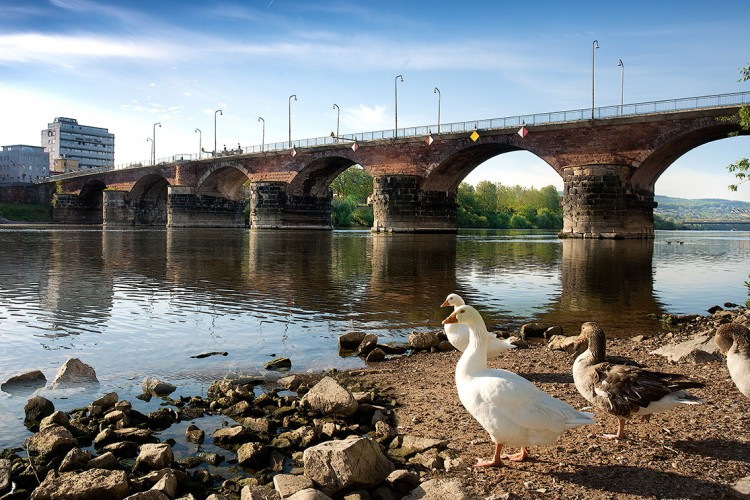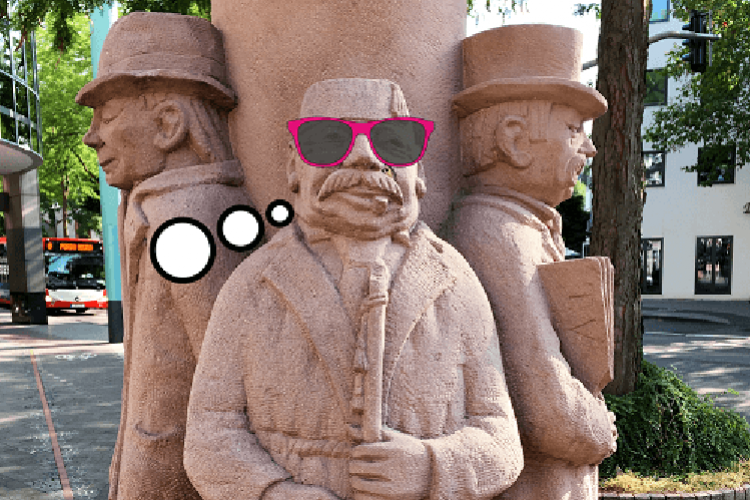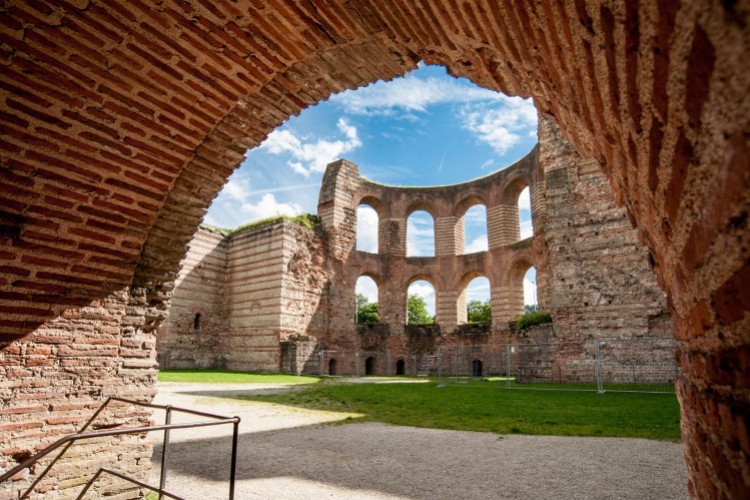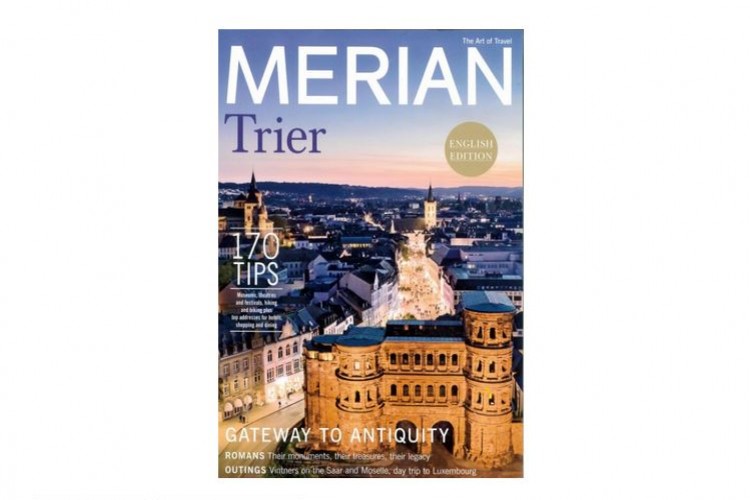Read more
Admittedly, even the Romans in Trier started out by experimenting a bit. Two wooden bridges which previously stood at this site, the oldest of which ties in directly with the city’s founding in 17 BC, started being replaced by today’s stone pylons in the year 144. But its success story is unparalleled: To this day, the Roman Bridge remains one of the city’s central hubs, with thousands of cars, cyclists and pedestrians crossing the river here – just as millions of other people have done over the last 1900 years. In Roman times, they would often throw a coin into the river as an offering to the goddess Mosella who lived there. Even today, experts believe a good million coins could be lying hidden in the riverbed. And while it’s no longer possible to go diving for them, you could set different rules when you establish your own city.
A must for: Border crossers. River watchers. The connected and those still connecting. City builders and skippers.
UNESCO World Heritage Site: 100%
Water: 50%
Land: 50%
PSSSST! THE INSIDER TIP:
A spectacular walking and cycling track connects the Roman Bridge to the old fishing village of Zurlauben. This 1.5-km route, which passes by the old 15th and 18th-century hoisting cranes, is particularly charming on sunny days. And on the other side of the river, perched high atop the Pulsberg, St Mary’s Column watches over the flâneurs at its feet. At the end of the track, you’ll be rewarded with traditional food and Trier’s national drink – a bitter, sour apple wine known as Viez.
Header: Romas_Photo/shutterstock.com
A must for: Border crossers. River watchers. The connected and those still connecting. City builders and skippers.
UNESCO World Heritage Site: 100%
Water: 50%
Land: 50%
PSSSST! THE INSIDER TIP:
A spectacular walking and cycling track connects the Roman Bridge to the old fishing village of Zurlauben. This 1.5-km route, which passes by the old 15th and 18th-century hoisting cranes, is particularly charming on sunny days. And on the other side of the river, perched high atop the Pulsberg, St Mary’s Column watches over the flâneurs at its feet. At the end of the track, you’ll be rewarded with traditional food and Trier’s national drink – a bitter, sour apple wine known as Viez.
Header: Romas_Photo/shutterstock.com
Opening hours
The Roman Bridge is freely accessible.
Admission
The Roman Bridge is freely accessible, no entrance fee is charged.
BRIDGEBLISS MEETS MOONWALKER
First and second of June: The event named BrückenGlück meets MoonWalker enterntaines you with a picnic (brought by yourself) with music, dance, guided tour, hiking and more.
Further information can be found here.
Further information can be found here.






